Marlborough Region
| Marlborough | |
|---|---|
|
Territorial authority Region of New Zealand | |
 The Marlborough Sounds seen from the Wellington–Picton ferry | |
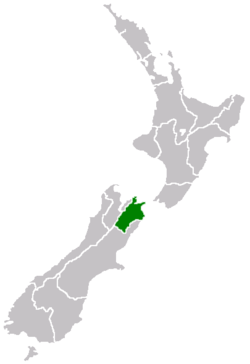 Location on South Island | |
| Country | New Zealand |
| Region | Marlborough |
| District | Marlborough District |
| Wards |
Blenheim Marlborough Sounds Wairau-Awatere |
| Formed | 1876 |
| Seat | Blenheim |
| Government | |
| • Mayor | John Leggett |
| • Deputy Mayor | Terry Sloan |
| Area | |
| • Total | 12,494 km2 (4,824 sq mi) |
| Population (June 2017)[1] | |
| • Total | 46,200 |
| • Density | 3.7/km2 (9.6/sq mi) |
| Time zone | UTC+12 (NZST) |
| • Summer (DST) | UTC+13 (NZDT) |
| Postcode(s) | Map of postcodes |
| Website | District Council |
The Marlborough Region, commonly known simply as Marlborough, is one of the regions of New Zealand, located in the northeast of the South Island. Marlborough is a unitary authority, both a region and a district, and its council is located at Blenheim. It has a population of 46,200 (June 2017)[1].
Marlborough is known for its dry climate, the picturesque Marlborough Sounds, and Sauvignon blanc wine. It takes its name from the earlier Marlborough Province, which was named after His Grace General The 1st Duke of Marlborough, an English general and statesman.[2]
Geography
Marlborough's geography can be roughly divided into four sections. Two of these sections, in the south and the west, are mountainous. This is particularly true of the southern section, which rises to the peaks of the Kaikoura Ranges. These two mountainous regions are the final northern vestiges of the ranges that make up the Southern Alps, although that name is rarely applied to mountains this far north.
Between these two areas is the long straight valley of the Wairau River. This broadens to wide plains at its eastern end, in the centre of which stands the town of Blenheim. This region has fertile soil and temperate weather, enabling it to become the centre of the New Zealand wine industry.
The fourth geographic zone lies along its north coast. Here the drowned valleys of the Marlborough Sounds make for a convoluted and attractive coastline. The town of Picton is located at the southern end of one of the larger sounds, Queen Charlotte Sound. The town of Havelock is located at the southern end of the Pelorus Sound, the Pelorus Sound also feeds into the Kenepuru Sound.
Rivers
People and government
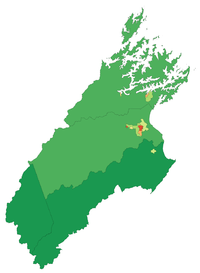
Marlborough is administered by a unitary authority, the Marlborough District Council. Between 1859 and 1876 Marlborough had its own provincial government, and was known as the Marlborough Province, which ended when the Abolition of the Provinces Act came into force on 1 Nov 1876.[3]
Much of the region's population is found around the coastal plains around and to the south of the mouth of the Wairau, and in smaller settlements along the coast of the Sounds. Apart from the main urban areas of Blenheim and Picton, Marlborough's towns include Havelock, Renwick, Ward, and Seddon.
Marlborough's world-famous former residents include rocket scientist William Pickering and Nobel Prize-winning physicist Ernest Rutherford.

Demography
Urban areas
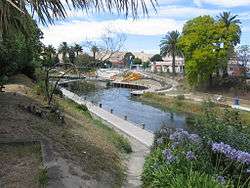
The Marlborough Region has only two urban areas with a population over 1,000: Blenheim, which includes the adjoining towns of Grovetown, Woodbourne and Renwick; and Picton, which including the adjoining town of Waikawa. Together they are home to 77.2% of the region's population. There are two other rural townships with a population over 300: Havelock and Seddon
| Urban area | Population (June 2017)[1] |
% of region |
|---|---|---|
| Blenheim | 31,300 | 67.7% |
| Picton | 4,360 | 9.4% |
Culture and identity
| Ethnicity | Number | % |
|---|---|---|
| European | 37,041 | 89.2 |
| New Zealand European | 34,896 | 84.1 |
| British | 381 | 0.9 |
| English | 381 | 0.9 |
| Australian | 249 | 0.6 |
| Dutch | 237 | 0.6 |
| Māori | 4,776 | 11.5 |
| Asian | 1,182 | 2.8 |
| Indian | 333 | 0.8 |
| Chinese | 273 | 0.7 |
| Pacific peoples | 966 | 2.3 |
| Samoan | 351 | 0.8 |
| Tongan | 267 | 0.6 |
| Middle Eastern/Latin American/African | 246 | 0.6 |
| Other | 1,044 | 2.5 |
| New Zealander | 1,038 | 2.5 |
| Total people stated | 41,514 | 100.0 |
| Not elsewhere included | 1,899 | 4.4 |
Economy
The sub-national GDP of the Marlborough region was estimated at US$1.193 billion in 2003, 1% of New Zealand's national GDP.[5]
Wine
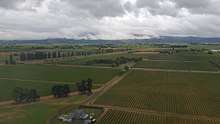
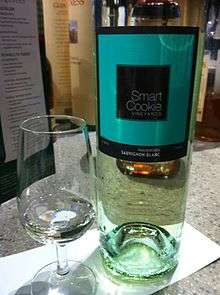
Marlborough is a well known wine producing region in New Zealand. Thanks to aggressive growth in the export market the Marlborough wine region is now responsible for the production of 77% of New Zealand's wine[6]. The most popular varietal is Sauvignon blanc, closely followed by Pinot noir and Chardonnay.
Marlborough's first vines, a small block of Brown Muscat, were planted in 1873 by local David Herd. However, in 1931 his son pulled up the last of his vines and no others were planted in the region until the 1970s. Wine giant Montana Wines (now Brancott Estate) returned wine making to Marlborough with the purchase of 1173 hectares in 1973 (100 years after the first Muscat grapes were planted)[7].
The strong contrast between hot sunny days and cool nights help vintners extend the ripening period of their vines like nowhere else, resulting in unique expressions of their grapes. For example, Sauvignon blanc from Marlborough offer unique aromas and flavors, which earns them much praise from wine lovers around the world.
The majority of Marlborough's extensive vineyard plantings are around Renwick, Blenheim, and Cloudy Bay in the Wairau valley. Further south in the Awatere valley are plantings near Seddon. These are for the most part on old terraces of the Wairau and Awatere rivers.
The area is widely considered by many critics to produce some of the world's best Sauvignon blanc. One wine critic said that "no other region in the world can match Marlborough, the northeastern corner of New Zealand's South Island, which seems to be the best place in the world to grow Sauvignon blanc grapes."[8] Wairau River, Tohu, Forrest Wines, Marisco Vineyards, Brancott Estate, Oyster Bay, Te Pa Wines, Hunters Wines, OTU Wines, Mud House, Cloudy Bay Vineyards, Framingham Wines, Saint Clair Estate Winery, Wither Hills and Grove Mill are notable vineyards in the region. Also important is the production of Methode Traditionelle sparkling wines, particularly near Renwick, from Riesling, Pinot noir and Chardonnay.
See also
References
- 1 2 3 "Subnational Population Estimates: At 30 June 2017 (provisional)". Statistics New Zealand. 24 October 2017. Retrieved 24 October 2017. For urban areas, "Subnational population estimates (UA, AU), by age and sex, at 30 June 1996, 2001, 2006-16 (2017 boundary)". Statistics New Zealand. 24 October 2017. Retrieved 24 October 2017.
- ↑ "Blenheim". New Zealand History. New Zealand Ministry for Culture and Heritage. Retrieved 11 October 2014.
- ↑ "New Zealand provinces 1848-77". rulers.org.
- ↑ "Ethnic group (total responses), for the census usually resident population count, 2001, 2006, and 2013 Censuses (RC, TA, AU)". Statistics New Zealand.
- ↑ "Regional Gross Domestic Product". Statistics New Zealand. 2007. Archived from the original on 20 May 2010. Retrieved 18 February 2010.
- ↑ "About Marlborough - Wine Marlborough". www.wine-marlborough.co.nz.
- ↑ "Marlborough's Wine History - Wine Marlborough". www.wine-marlborough.co.nz.
- ↑ George M. Taber, Judgment of Paris (New York, Scribner, 2005), p. 244.
External links

- Marlborough District Council
- Discover Marlborough: The Marlborough Web Directory
- Marlborough Online
Coordinates: 41°53′S 173°40′E / 41.883°S 173.667°E
| Wikimedia Commons has media related to Marlborough Region. |